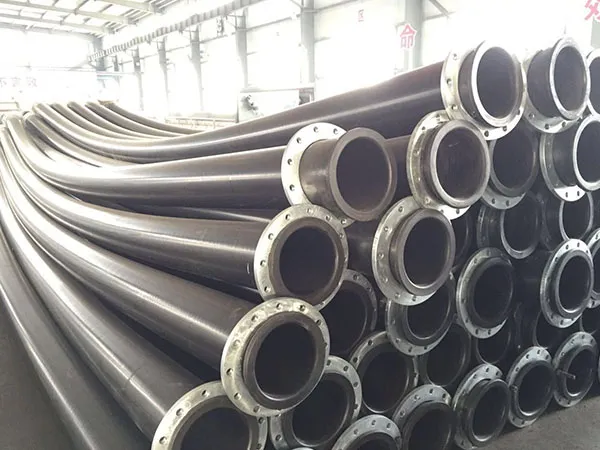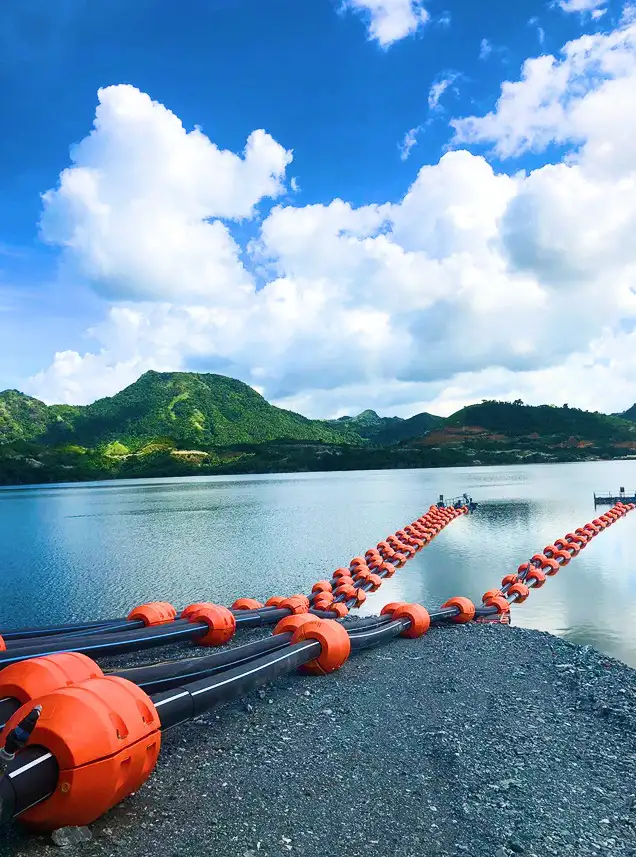Time: 2025-08-05 07:19:51 Source: Max Pipe
Ultra-High Molecular Weight Polyethylene (UHMWPE) pipes are renowned for their exceptional performance, particularly in abrasive and challenging environments. Their unique properties stem from their extremely long polymer chains, which result in superior characteristics compared to conventional HDPE pipes.

Unmatched Wear Life: This is the most significant advantage of UHMWPE. It's often cited as being 4 to 7 times more wear-resistant than Q235 steel pipe, and even significantly better than HDPE (e.g., 10 times more abrasion resistant than HDPE). This makes it ideal for transporting highly abrasive slurries, mining tailings, coal ash, dredging materials, and other solid-laden fluids.
Low Friction: The extremely low coefficient of friction (typically between 0.05 and 0.11, compared to 0.32-0.45 for steel) not only contributes to its abrasion resistance but also reduces energy consumption. This means less pressure loss and higher flow rates, leading to significant pumping cost savings (up to 25% energy savings compared to steel pipes for the same flow rate).
Highest Among Thermoplastics: UHMWPE boasts the highest impact strength of any thermoplastic currently made. It's typically 5 times that of HDPE, 2 times that of PC (polycarbonate) pipe, and 10 times that of PTFE (Teflon) pipes. This extraordinary impact resistance allows UHMWPE pipes to withstand significant external forces, such as water hammer impacts in pumping stations, and is crucial for applications in seismic zones or areas with ground movement.
Resistance to Brittle Fracture: Even at very low temperatures (down to -70°C or even -269°C), UHMWPE maintains excellent impact strength and flexibility, making it suitable for cold regions.
Excellent Corrosion Resistance: UHMWPE has a saturated molecular structure, providing high chemical stability. It's highly resistant to a wide variety of strong acids, alkalis, salt solutions, alcohols, and many other chemicals.
Immunity to Galvanic/Electrolytic Attack: Unlike metal pipes, UHMWPE is not susceptible to galvanic or electrolytic corrosion, allowing it to be used underground, underwater, and connected to metals without degradation.
Limitations: While highly resistant, it's generally an exception to oxidizing acids. For critical applications, it's always recommended to consult a chemical compatibility chart.
Self-Lubricating: UHMWPE is intrinsically self-lubricating, meaning it has a waxy, slippery surface. This, combined with its extremely low coefficient of friction (0.009 for UHMWPE vs. 0.013 for steel pipe), ensures highly efficient flow.
Prevents Scaling and Fouling: The smooth interior surface and non-adhesive properties of UHMWPE pipes efficiently prevent scaling and material buildup. This eliminates the need for acid cleaning, significantly reducing maintenance costs and ensuring consistent flow capacity over the pipe's lifespan.
High Elongation at Break: UHMWPE pipes exhibit a high elongation at break (no less than 350% and often reaching 400% or more). This flexibility allows them to absorb surge pressures, vibrations, and stresses caused by soil movement, making them ideal for submarine pipelines, mine subsidence areas, and earthquake-prone regions.

Low-Temperature Performance: UHMWPE performs exceptionally well at very low temperatures, maintaining its mechanical properties.
Higher-Temperature Limits: While excellent at low temperatures, UHMWPE's upper-temperature limit is more modest compared to some other plastics or metals. It can typically operate continuously up to 80-85°C (176-185°F) and intermittently up to 100°C (212°F) or slightly higher (some sources state up to 200°F/93°C intermittently). Its melting point is around 130-136°C (266-277°F). Prolonged exposure to temperatures above 80-100°C can lead to a loss of mechanical properties.
Lightweight: UHMWPE pipes are significantly lighter than steel pipes (approximately 1/8th the weight of steel), reducing transportation, handling, and installation costs.
High Pressure Resistance: UHMWPE pipes are high-pressure resistant. Their compressive strength can be 2 times that of PE100 pipes and 2.5 times that of PE80. They can withstand fluctuating water pressures.
Non-Toxic and Odorless: UHMWPE is non-toxic and odorless, making it suitable for applications in the food and beverage industry and for potable water.
UV Resistance: While some sources mention limited UV resistance compared to other materials, many UHMWPE pipes are formulated with UV stabilizers (like carbon black) to provide good long-term outdoor performance.
Difficult to Bond/Weld: Due to its high molecular weight, UHMWPE can be more challenging to bond or weld compared to HDPE, often requiring specialized techniques or fittings.
In summary, UHMWPE pipes are engineered for extreme conditions where abrasion, impact, and chemical resistance are paramount. They offer a highly durable and cost-effective solution for conveying abrasive slurries, chemicals, and other challenging media in industries such as mining, dredging, power generation, and chemical processing.
